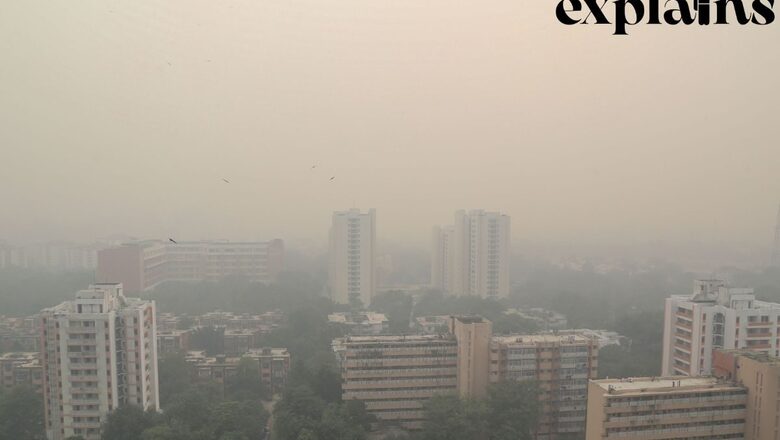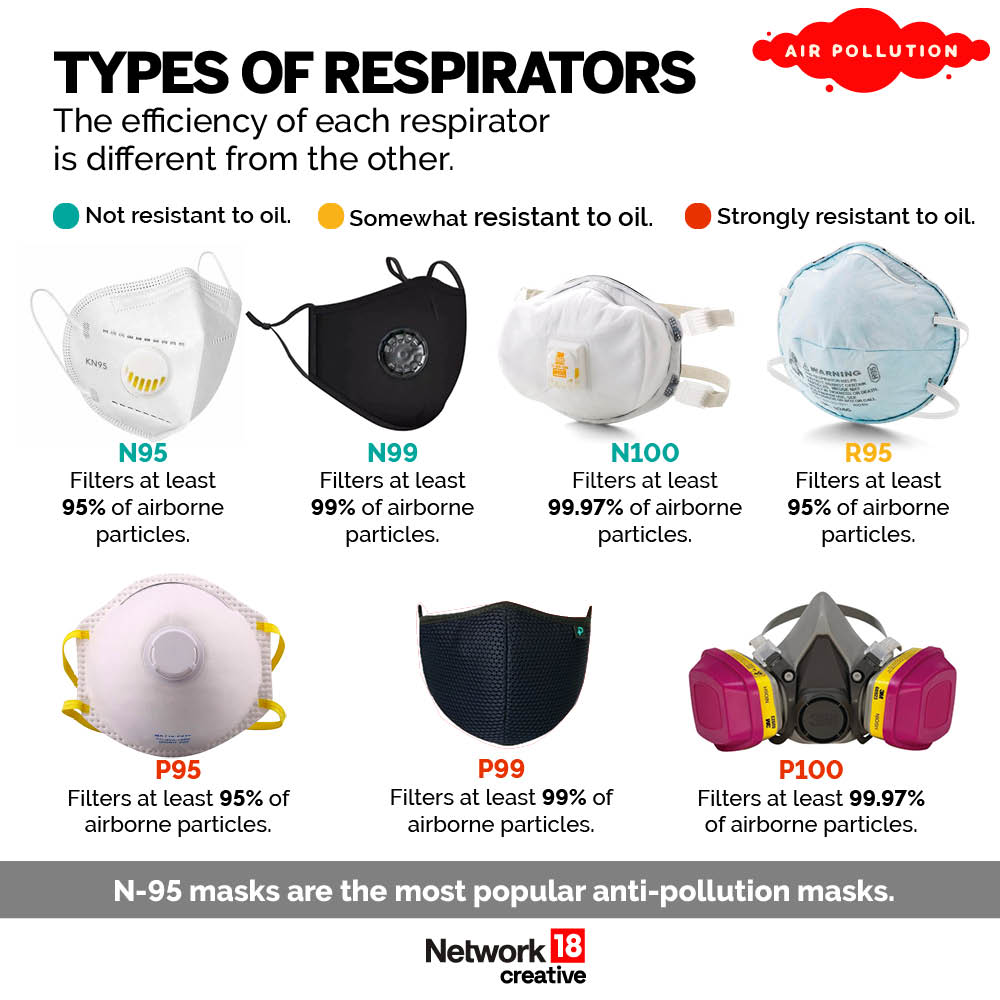Delhi Air Pollution: As AQI Touches 700, Here is How to Protect Against Poor Air Quality | EXPLAINED

views
People in New Delhi woke up to a thick layer of toxic haze on Friday as the air quality index (AQI) plummeted to the “severe plus” category in several parts of the national capital. Many residents in Delhi complained of irritation in the eyes and itchy throats with the air turning a dense grey as the AQI hovered around 500 in several parts of Delhi-NCR.
Air Pollution LIVE: ‘You Want People to Live in Gas Chambers?’ Delhi HC Raps AAP Govt
New Delhi topped a real-time list on Friday of the world’s most polluted cities compiled by Swiss group IQAir which put the national capital’s AQI at 611 in the ‘hazardous’ category. As per weather agency aqicn.org, the air quality index in Delhi’s Anand Vihar at 999, while Noida’s Sector 62 logged 469.
Delhi’s Commission for Air Quality Management blamed the record pollution levels on the sudden increase in farm fire incidents and north-westerly winds moving the pollutants to Delhi. Amid the surging pollution levels, health experts are concerned about the potential increase in asthma and respiratory issues, particularly among children and the elderly.
Here are some of the ways by which people can protect their family and their children against poor air quality and its effects:
Wearing A Mask
Experts suggest that during days with poor AQI, people should avoid unnecessary travelling in highly-polluted regions and wear an N95/99 mask. Moreover, in case of excessive smog, walking or jogging should be avoided until the smog settles or can be shifted to the evening hours.

If one doesn’t have a mask, then as an emergency resort, a person can use a wet handkerchief and cover his/her mouth. This will restrict pollutants from entering the lungs. Medical experts at both government and private hospitals have cautioned people not to venture out early morning for doing exercises or take a walk, and asked them to wear a mask when stepping out for work or market or other places.
Using air purifier
While we may not control the air pollution outdoors, several steps can be taken to improve the air quality indoors. Using portable air purifiers in your home and workplace can help guard against high exposure to air pollution.
For Patients with chronic conditions
People who have chronic respiratory conditions like asthma and chronic obstructive pulmonary disease (COPD) are particularly susceptible to the negative effects of air pollution. Asthma and COPD can be brought on suddenly by air pollution, which also raises respiratory morbidity and mortality rates.
There are certain tests that can be done to understand if you one has sensitivity to the air pollutants. These tests could be Hypersensitivity Pneumonitis Panel, cardiometabolic panel, Liver function tests, Kidney screen plus, Hypereosinophilic syndrome gene panel, Asthma and inhalational allergy panel and outdoor allergy inhalation panel.
Protecting Children
Young kids are more sensitive to polluted air than people who are in their mid-ages. Children, less than 8 years of age, should avoid going outdoors when the pollution levels are high. Since children breathe faster in comparison to adults, they take in more air relative to their body weight.
Moreover, the heavier air pollution particles are placed closer to the ground, which makes toddlers and shorter kids more susceptible to inhaling copious amounts of PM 2.5 with each breath. Air purifiers should be used inside the room for kids, the elderly, people suffering from illnesses, and pregnant women.
Protect Yourself From Traffic
Since vehicular pollution is one of the major sources of pollution, getting exposed to the pollution on the roads could be risky, especially in congested areas or in traffic. Therefore, commuters can take steps like shutting car windows, using the recirculation button and avoiding motorbikes.
Plant more trees
Trees play a crucial role in purifying the air we breathe. Therefore, planting more trees in urban areas can significantly reduce traffic-related air pollution and is the best solution for pollution in the long-term. Trees serve as natural air filters and help to diminish the negative effects of traffic-related air pollution.
Use of Indoor Plants
To keep the indoor spaces clean of pollution, plants like Scindapsus, green money plant, peace lily, areca palm, snake plant, rubber plant, etc can be used as they purify the air quality and enrich oxygen in the surroundings. These plants absorb benzene, nitrogen dioxide, carbon dioxide and reduce dust, noise and toxins from the air.
Controlling Emissions
It is advisable that all forms of emissions should be reduced in case of high pollution. The burning of wood for ‘bhattis’, ‘tandoors’ and burning coal should be avoided as it causes a lot of pollution. Moreover, experts advise against smoking, especially in indoor areas, as they can harm those surrounding the smoker as well.



















Comments
0 comment